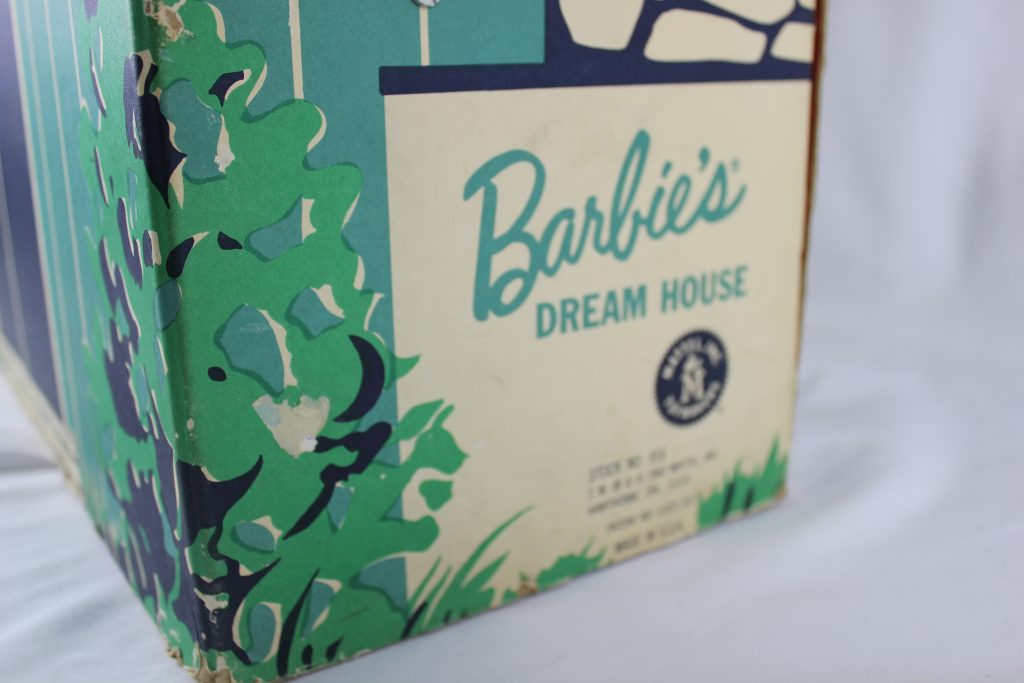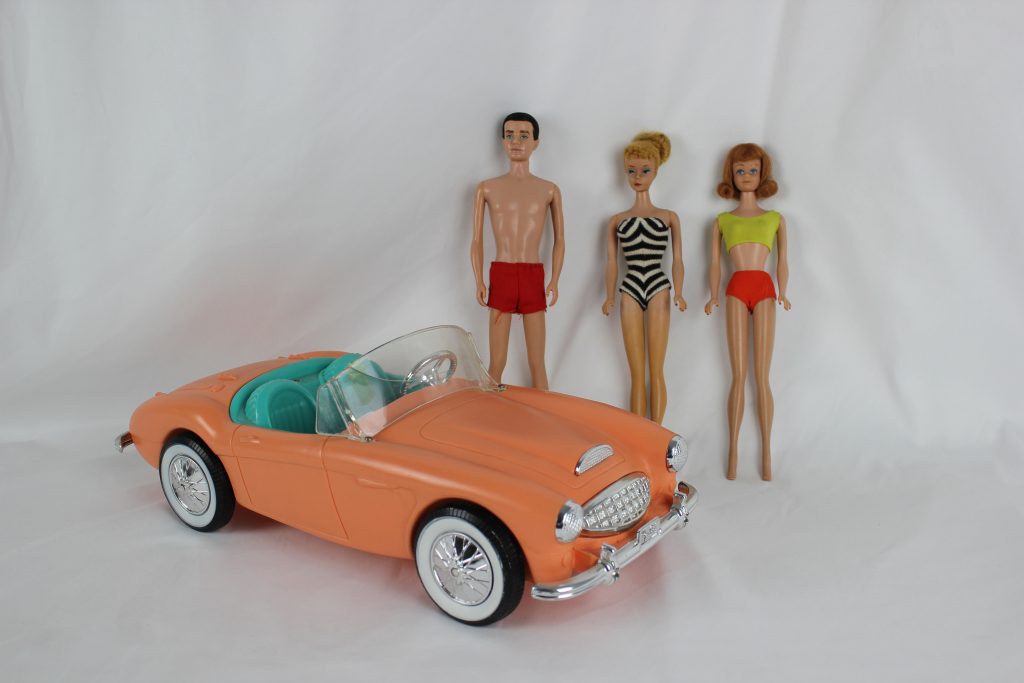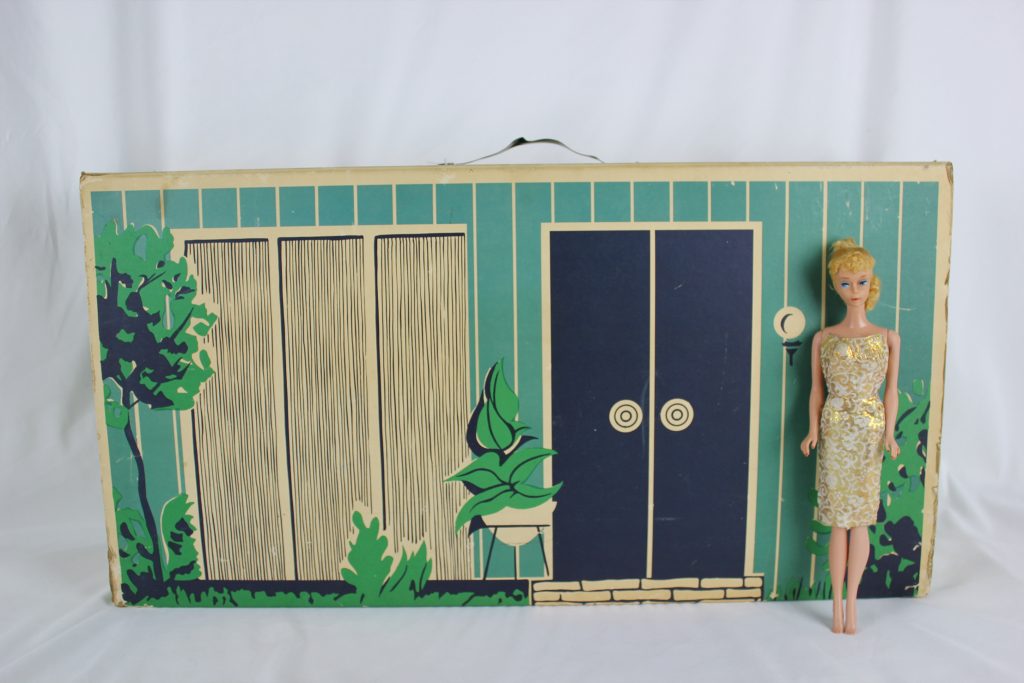Curator Corner: Barbie
Introduced to the market in 1959, the Barbie doll was the first toy aimed at girls that encouraged them to imagine women having careers, rather than just being mothers. Barbie was a self-sufficient woman, not reliant on any man. Ken, introduced several years later as a romantic interest, was just another accessory for Barbie. This offered something of a reversal of traditional gender stereotypes.
Barbie was created by a woman and mother, Ruth Handler, who is said to have wanted her daughter to be able to imagine herself in as many job roles as her son could through his toys. While Barbie does not break the unrealistic beauty standards she has been criticized for perpetuating, she is still credited with inspiring many young girls to believe that women can have real careers in a time when this was still a very new concept. Appearing with various models over the years, Barbie has become a major collector’s item. In our collections we have several dolls from the 1960s. These early dolls are made from Polyvinyl Chloride (PVC) plastic. Early PVC formulae can be particularly unstable, and eventual deterioration is expected. For this reason, we keep our plastic items separate from other objects.
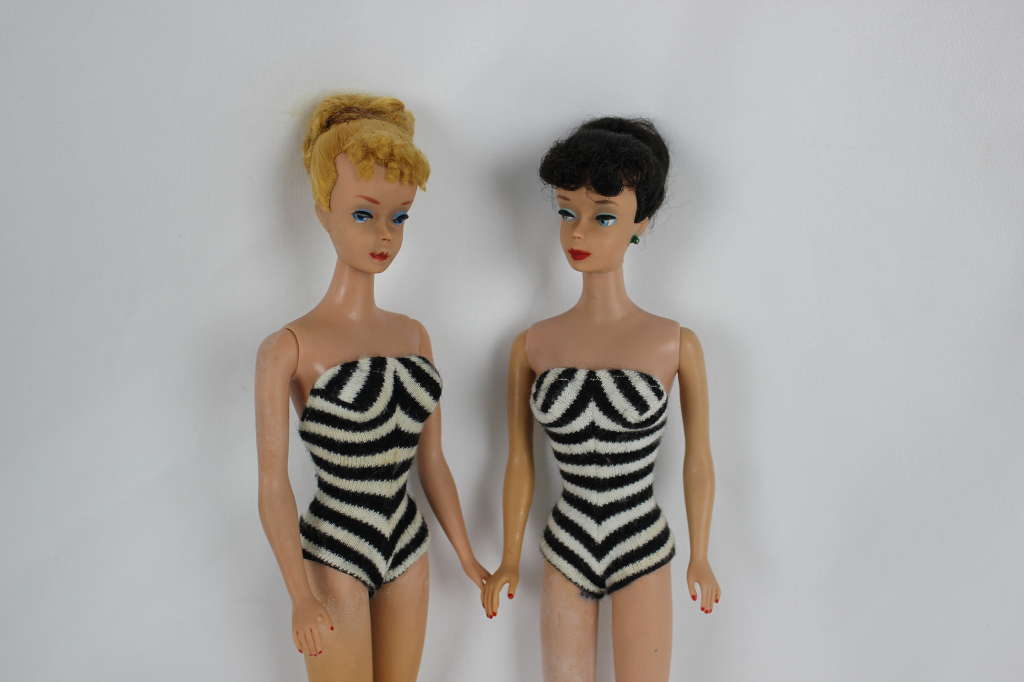
The first model for Barbie featured her in a black and white bathing suit, as seen here. Many accessories and outfits could be purchased for her. This led to accusations that she encouraged materialism, but this shouldn’t be too much of a surprise from a toy manufacturer! The white discoloration on the plastic is normal for aging PVC and is a result of the plasticizer condensing on the surface. Plastic deterioration cannot be reversed.
Barbie’s Friends
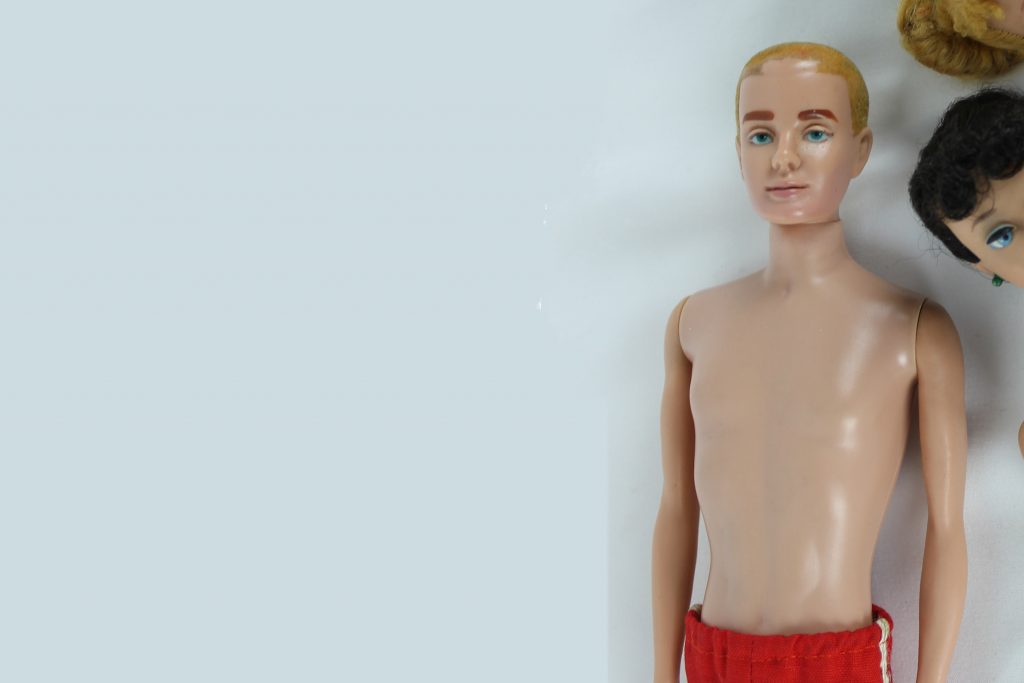
Ken was introduced in 1961, two years after Barbie’s debut. The original Ken doll was sold in a bathing suit as well, as shown, and additional outfits could be purchased for him.

Introduced in 1963, Barbie’s best friend Midge was the first of many “friend” dolls that would come out through the decades. She has distinct facial features from Barbie, but the same body mold. While new and updated Barbies and Kens came out after their initial designs, Midge did not get another release until 1988.
All of the Barbie dolls in our collection belonged to the Frampton family from Wilmington, Delaware and were donated by the sisters who played with them as children. The girls who once played with these dolls grew up to be accomplished women with diverse careers and hobbies, much like the Barbie dolls they cherished.
Curator Corner
The Division of Historic and Cultural Affairs’ Center for Material Culture presents Curator Corner, a monthly web periodical featuring various collections objects and their stories. Visit the Collections Program page to learn more.
-
Curator Corner: Barbie
Introduced to the market in 1959, the Barbie doll was the first toy aimed at girls that encouraged them to imagine women having careers, rather than just being mothers. Barbie […]
-
Curator Corner: Hair Jewelry
The Collections Program at the Division of Historical and Cultural Affairs holds thousands of stories that can be told through historic objects, some of which are hair jewelry. The practice […]



